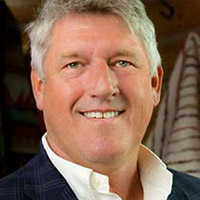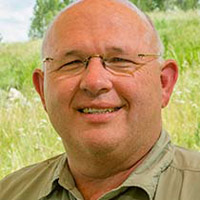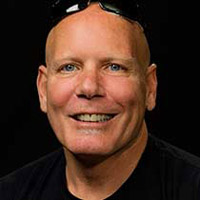Q & A: IRAs for your Children

Q & A: IRAs for your Children
Establishing a retirement plan for a child might, initially, sound a bit strange—or at least premature. Truly, it is not. Establishing an IRA for your children or grandchildren can help them achieve financial independence in retirement and, possibly, for the rest of their lives. That claim may raise some questions in your mind. How is it possible? Simply stated, given enough years of tax-deferred compounding of investment earnings, an IRA can yield some amazing numbers. (See the examples below.)
How can my child set up an IRA?
Actually, although the IRA will be your child’s, you set it up and serve as custodian until the child reaches majority. But your child rather than you is the “owner” of the IRA and is subject to all the income requirements and rules.
How much can my child contribute?
The contribution rule is the same for your child as it is for you. For 2006 the maximum allowable contribution to a traditional IRA or Roth IRA is $4,000. (If you are age 50 or older, you can contribute up to $1,000 more.) But there is a catch, one that is especially relevant when we’re talking about children. If the IRA owner’s earned income (income from wages, not from investments) is less than the maximum contribution amount, the contribution is limited to the income that he or she earns.
How can I convince my child to give up his or her earnings and put them in an IRA?
You don’t have to. You can make the contribution, by making a gift to your child of the contribution amount (up to his or her earned income). The annual gift tax exclusion ($11,000 in 2005 and $12,000 in 2006) shelters your gift from tax.
Which is better, a traditional or a Roth IRA?
A Roth IRA generally is considered to work best for children. First, withdrawals from a Roth IRA are tax free, provided that all the conditions are met. And there are no required distributions when the owner reaches age 70 1/2. But though contributions can be withdrawn tax free at any time, for the earnings to get the preferential treatment, a Roth IRA must be owned for at least five years and the owner be at least age 59 1/2. A traditional IRA allows pretax contributions, but tax is owed on withdrawals. That may not be a big benefit when your child is relatively young and owes little or no tax on that income. Both IRAs permit penalty-free withdrawals for education expenses and $10,000 in home-buying expenses for the first residence purchased.
What kind of wage income are we talking about?
Paying your child an allowance for helping out at home isn’t likely to be “earned income” and survive IRS scrutiny. On the other end of the spectrum, a regular paycheck from a business or the like clearly qualifies. Whether money from in-between situations—baby-sitting, lawn mowing, snow shoveling—is earned income is less certain. The best approach is for your child to keep accurate and detailed records (dates, names of employers, amounts paid for each job) of his or her earnings. If you are employing your child at your business, be sure to treat him or her as you would any other employee.
Is there a downside to setting up an IRA for my child?
Potentially, there’s a major one: Once your child reaches majority, he or she is free to take funds from the IRA as he or she pleases, even close it out. If all the Roth IRA conditions aren’t met, in addition to tax on the investment earnings, penalties could apply as well. And who knows how the money will be spent?
Examples: Big things can happen to small contributions
Just how big can a Roth IRA grow? Here are two examples (all names and circumstances fictitious):
• The Smiths set up a Roth IRA for their 16-year-old daughter, Sarah, who works after high school and during summers and also will work throughout college, earning at least $3,000 a year. Each year, for six years, the Smiths contribute $3,000 a year to the IRA for Sarah. There are no subsequent contributions. Assuming an investment rate of return of 6% a year, here’s what will accumulate in Sarah’s IRA:*
After the six years of contributions end (at age 22): $20,926
After ten more years: $36,526
When Sarah reaches age 65: $249,860
• The Petersons set up a Roth IRA for their 16-year-old son Al, who also works after high school, during summers and throughout college, earning enough to allow the Petersons to make $3,000 a year in contributions for him. At age 22 Al takes on the responsibility for making contributions from then on, putting $5,000 a year into his IRA.** Assuming retirement at age 65 and an investment return of 6% a year, here’s what will accumulate in Al’s IRA:*
After six years of $3,000 contributions: $20,926
After ten additional years of $5,000 contributions: $102,430
When Al reaches age 65: $1,187,398
*This rate is hypothetical, chosen for illustrative purposes only. It does not represent the past or future performance of any specific investment or mutual fund.
**$5,000 per year is the maximum allowable contribution for 2008 and after, assuming that the increases that became law in 2001 become permanent instead of expiring after 2010. Contributions to a Roth IRA may be limited or unavailable above certain adjusted gross income limits.
—————————————————————————————————————————————————————————————————————
We hope you found this article about “Q & A: IRAs for your Children” helpful. If you have questions or need expert tax or family office advice that’s refreshingly objective (we never sell investments), please contact us or visit our Family office page or our website at www.GROCO.com. Unfortunately, we no longer give advice to other tax professionals gratis.
To receive our free newsletter, contact us here.
Subscribe our YouTube Channel for more updates.

Alan Olsen, is the Host of the American Dreams Show and the Managing Partner of GROCO.com. GROCO is a premier family office and tax advisory firm located in the San Francisco Bay area serving clients all over the world.
Alan L. Olsen, CPA, Wikipedia Bio

GROCO.com is a proud sponsor of The American Dreams Show.

The American Dreams show was the brainchild of Alan Olsen, CPA, MBA. It was originally created to fill a specific need; often inexperienced entrepreneurs lacked basic information about raising capital and how to successfully start a business.
Alan sincerely wanted to respond to the many requests from aspiring entrepreneurs asking for the information and introductions they needed. But he had to find a way to help in which his venture capital clients and friends would not mind.
The American Dreams show became the solution, first as a radio show and now with YouTube videos as well. Always respectful of interview guest’s time, he’s able to give access to individuals information and inspiration previously inaccessible to the first-time entrepreneurs who need it most.
They can listen to venture capitalists and successful business people explain first-hand, how they got to where they are, how to start a company, how to overcome challenges, how they see the future evolving, opportunities, work-life balance and so much more..
American Dreams discusses many topics from some of the world’s most successful individuals about their secrets to life’s success. Topics from guest have included:
Creating purpose in life / Building a foundation for their life / Solving problems / Finding fulfillment through philanthropy and service / Becoming self-reliant / Enhancing effective leadership / Balancing family and work…

MyPaths.com (Also sponsored by GROCO) provides free access to content and world-class entrepreneurs, influencers and thought leaders’ personal success stories. To help you find your path in life to true, sustainable success & happiness. It’s mission statement:
In an increasingly complex and difficult world, we hope to help you find your personal path in life and build a strong foundation by learning how others found success and happiness. True and sustainable success and happiness are different for each one of us but possible, often despite significant challenges.
Our mission at MyPaths.com is to provide resources and firsthand accounts of how others found their paths in life, so you can do the same.
Learning to Live Abroad | Keith Van Sickle
About Keith Van Sickle Keith grew up in Alameda, California, the son of public school teachers. He got his first taste of overseas life while spending a college term in England and later backpacked around the world for six months. Grateful for the scholarships that helped him pay for college, in 1987 he started…
Becoming Part of the Solution | Troy Downing
About Troy Downing Troy is a strong supporter of smaller government, the 2nd Amendment, and economic prosperity for all through lower taxes. An avid outdoorsman and huntsman, Troy firmly believes that we need true political outsiders in Washington to stand up for Montana against the federal government whenever necessary. Troy started as a Research Scientist,…
Inspiring Others to Succeed | Ray Dillon
About Ray Dillon Ray Dillon began his career as a process engineer working for the Zellerbach Corporation in Bogalusa, Louisiana. As Ray began his career the mill he was working at was just starting to modernize- an enviorment which Ray as a young engineer thrived in. He quickly rose through the ranks and eventually…
RockTape: Go Stronger Longer | Greg van den Dries
About Greg van den Dries Greg van den Dries is the founder of RockTape, a company that produces kinesiology product to allow injured athletes to remain active. The company started in 2009 and has grown exponentially. Currently it has 13 international offices that service 60 different countries. RockTape is Greg’s 7th startup company. Prior to…




